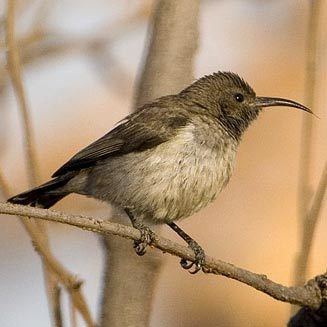Order Passeriformes Higher classification Cinnyris | Phylum Chordata Family Nectariniidae Scientific name Cinnyris talatala Rank Species | |
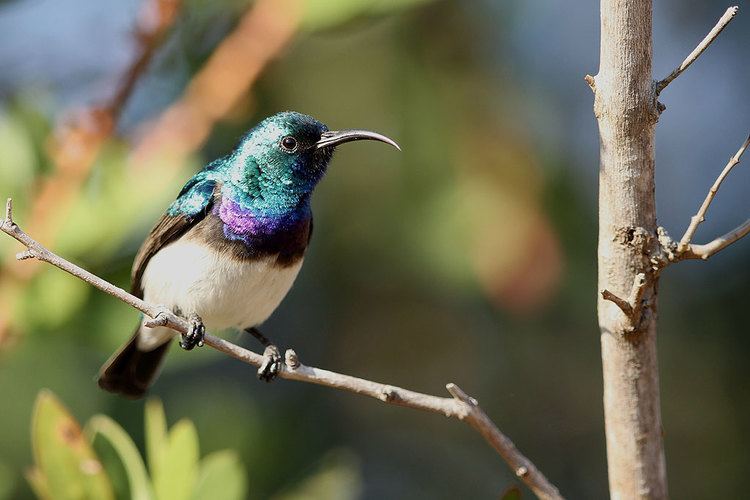 | ||
Similar Sunbird, Bird, Cinnyris, Greater double‑collared sunbird, Amethyst sunbird | ||
White bellied sunbird chick
The white-bellied sunbird (Cinnyris talatala), also known as the white-breasted sunbird, is a species of bird in the Nectariniidae family. It is found in Angola, Botswana, Democratic Republic of the Congo, Malawi, Mozambique, Namibia, South Africa, Swaziland, Tanzania, Zambia, and Zimbabwe.
Contents
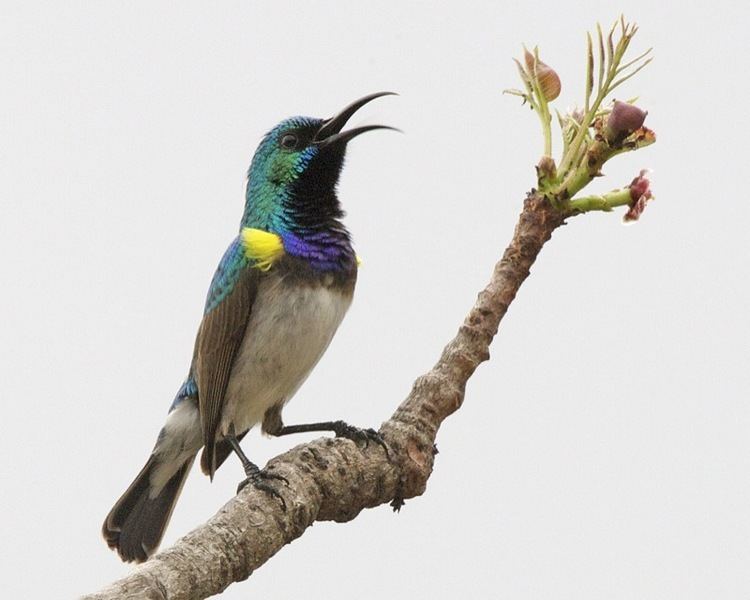
Distribution and habitat Occurs from Angola to southern Tanzania south to southern Africa, where it is common to locally abundant across northern Namibia, northern and south-eastern Botswana, Zimbabwe, Mozambique, Swaziland and north-eastern South Africa. It generally prefers semi-arid savanna woodland, such as Acacia, bushwillow (Combretum) and riparian thickets, Zambezi teak (Baikiaea plurijuga) and mixed miombo (Brachystegia) woodland.
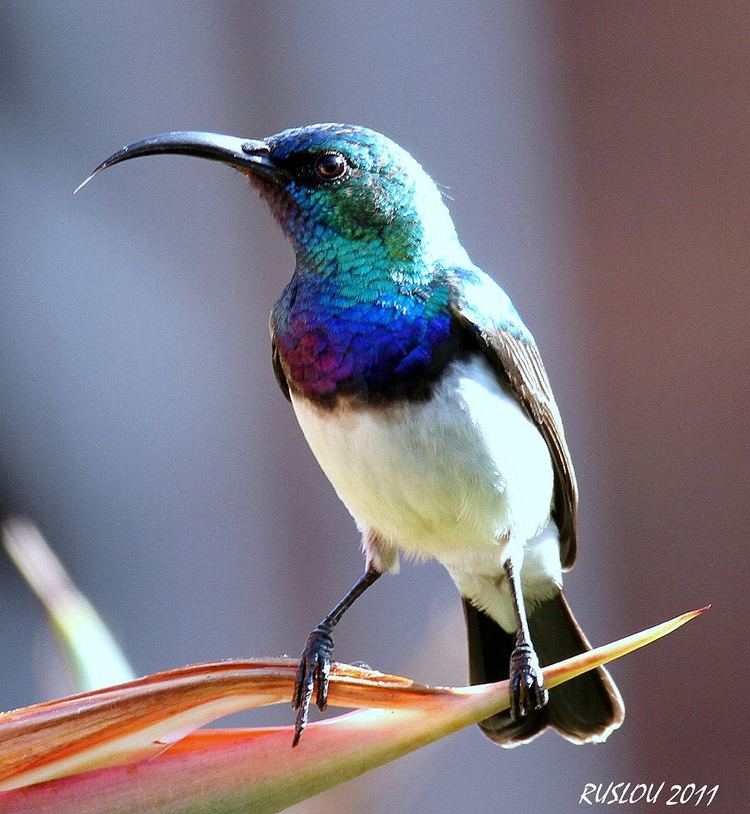
Predators and parasites It has been recorded as prey of the following mammals: Felis cattus (Domestic cat) Galerella sanguinea (Slender mongoose)
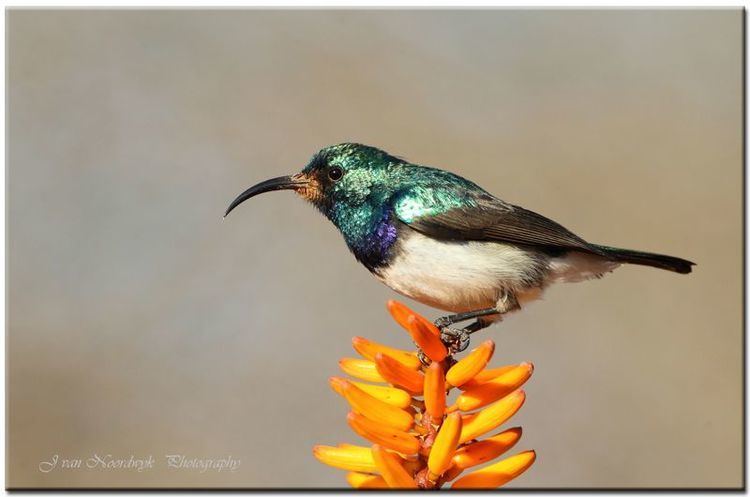
Brood parasites It has been recorded as host of the Klaas's cuckoo.
Food It mainly eats nectar supplemented with arthropods, often joining mixed-species foraging flocks in the day, along with other sunbirds at large sources of nectar. In the late afternoon it regularly hawks insects aerially and gleans invertebrates from foliage.
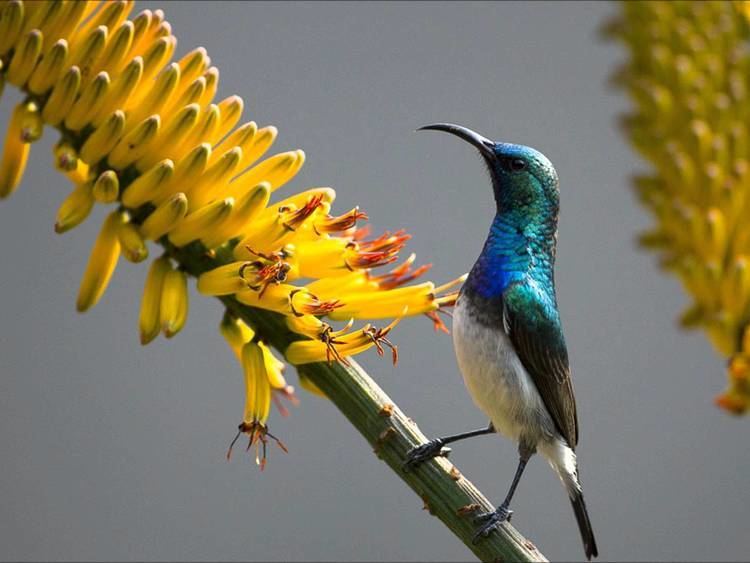
The following food items have been recorded in its diet:
* Nectar
* Arthropods
Breeding The nest (see image) is built solely by the female in about 5–8 days, consisting of an untidy oval-shaped structure made of dry material such as grass and leaves, bound together with spider web. The outside is decorated with bits of leaves and bark, while the interior is thickly lined with plant down, sometimes along with feathers and wool. It is typically attached to the branches or thorns of a plant, such as a Queen-of-the-night cactus (Cereus jamacaru), prickly-pear cactus (Opuntia) or a tree, sometimes alongside active paper wasp (Belanogaster) nests. Egg-laying season is from June–March, peaking from September–December. It lays 1-3 eggs, which are incubated solely by the female for 13–14 days. The chicks are brooded solely by the female but fed by both parents, leaving the nest after about 14–15 days, after which they continue to roost at the nest for about 4-14 more days.
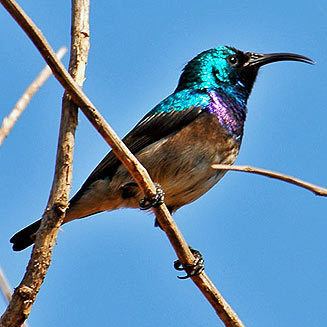
Threats Not threatened, in fact it seems to have benefited from the fragmentation and disturbance of miombo (Bracystegia) woodland in Zimbabwe.
